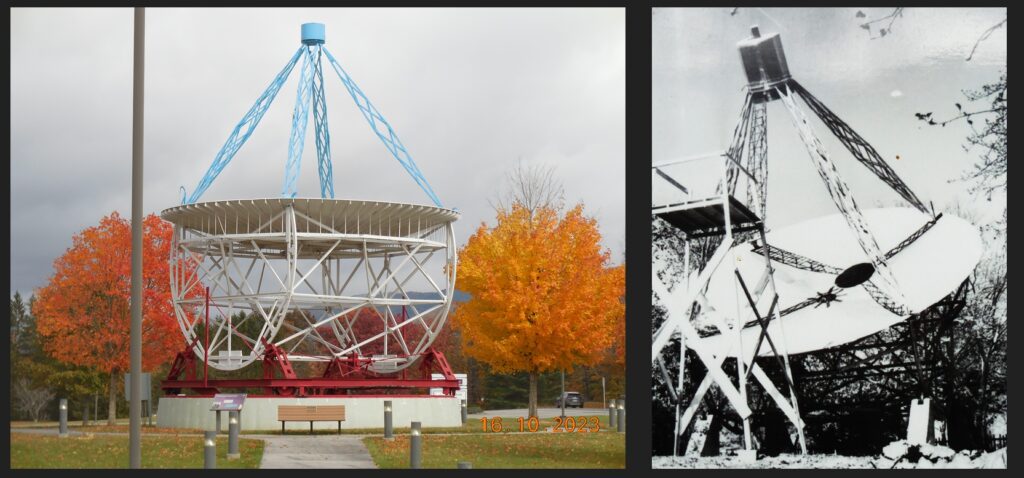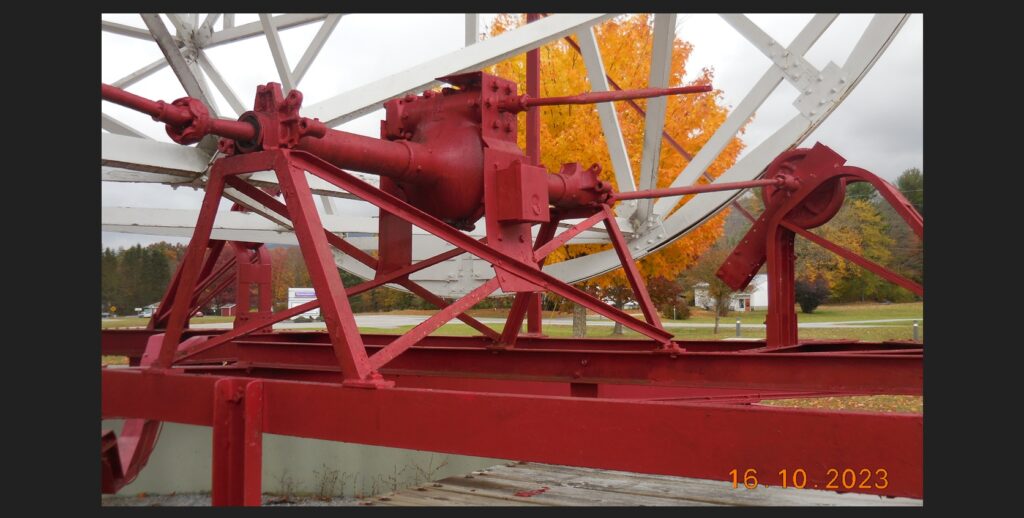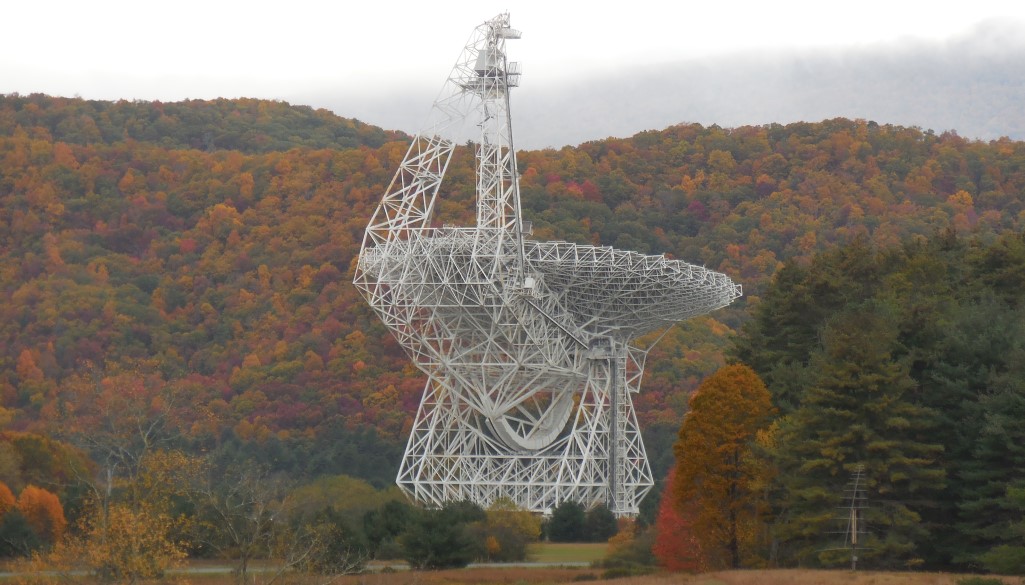In Green Bank, West Virginia, there is a big radio telescope (pictured above) doing cutting-edge research. There are also some historic radio telescopes there. You can visit the Green Bank radio observatory, if you have the stomach for the long drive along the two-lane mountain highways that get you there. In October, I visited the observatory with my wife, godson, and friends, and managed to take a few pictures.
To my mind, the most interesting telescope at Green Bank is the Grote Reber telescope (below, left). Reber built this dish in 1937, next to his mother’s house in Wheaton, Illinois.* He was in his mid-20s at the time. The right-hand photo shows the dish in Wheaton. Apparently, Reber had a very supportive mother. She probably had some very bemused neighbors!

Reber was an amateur astronomer. He worked in the radio industry and decided to build (or basically invent) his own radio telescope when he learned that radio waves had been detected from space. He was the world’s only radio astronomer for a decade, and he used his radio telescope to create the first map of the radio sky in 1941.
As it is set up at Green Bank, the telescope has wheels that allow it to be steered horizontally (in azimuth) as well as tilted vertically (in altitude). But the Wheaton photograph shows that originally the telescope’s azimuth was fixed, pointing due south. Reber controlled its altitude by means of a mechanism built from the rear axle of a car (a Model T). You can see in the photo below a shaft that probably had a crank attached, which Reber turned, which then drove the car axle to turn the wheels that tilted the dish.

It seems the rotation of the Earth took care of the rest. Reber had a chart recorder that kept a record of radio signal strength (below, left). As the sky passed overhead, the recorder rose and fell, and from those changes Reber could map out the signal strength on the sky (right).

Note the spikes on the chart. Those were caused by the spark plugs of passing cars. Reber often worked at night, to avoid that interference. Today, only diesel vehicles can approach the research radio telescopes at Green Bank. Diesels have no spark plugs, and indeed no electrical ignition system at all.
Reber’s basic design is what is seen in radio telescopes everywhere. He donated the telescope to Green Bank around 1960. I wonder if the reason it has wheels for azimuth control is because it was intended to still be used? The telescope was just a bit over 20 years old at the time—no older than Green Bank’s main telescope is today. The Green Bank visitor’s center also has some of Reber’s radio equipment that he used with his dish. Here is an old photo of Reber’s first radio receiver, and the receiver today in the Green Bank visitor’s center.

Green Bank is a pretty cool place—and in October, with the trees in full color, it is a very pretty place.
*All information on Reber comes from informative panels at Green Bank.

